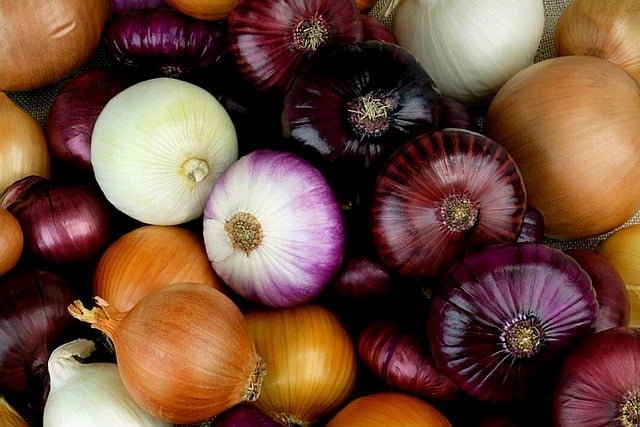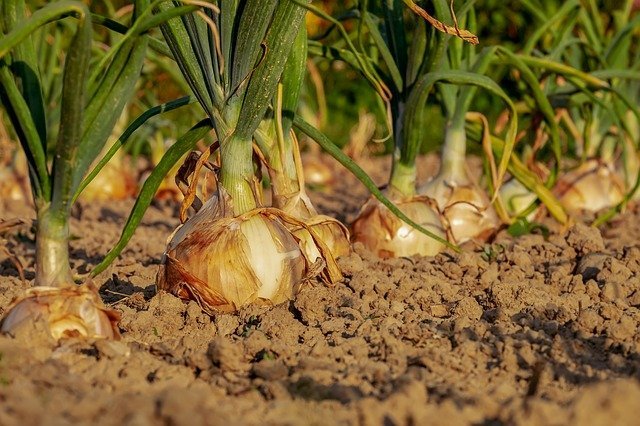This ultimate guide on onion farming will help you in cultivating onion in your farmland. Get to know soil, climate, fertilizers, irrigation requirements for successful cultivation of onions.
Table of Contents
Introduction
After potato it is onion which is the second most important commercial crop in the world. Moreover if you are a beginner in farming then cultivating onions can be a good choice. Onion farming requires less inputs and on a large scale it can give higher returns.
A farmer can get yield up to 130 quintal from one acre of farm land if he follows best practices. And through this article I am going to describe all the necessary points for cultivating onions.
Origin Of Onion
Onions are one of the oldest cultivated vegetables in the world. Modern researchers are still not able to tell the exact origin of onion. But according to the history they believe that onion originated in Central Asia and later on it spread to other parts of the world.
There are records of onion cultivation 5,500 years ago in Egypt, and 5000 years ago in India and China.
Area & Distribution
All the hard work of farmer contributes to the production of around 93,226,000 tonnes of onion every year. China is the largest producer of onion. It produces around 23,907,509 tonnes of onion every year.
This is followed by India that produces around 19,415,425 tonnes of onion every year. Other major onion producing countries are Egypt, United States Of America, Iran, Turkey, Russia, etc.
Let’s now discuss how they are able to achieve this.
Onion Farming Guide

Soil Requirements
You can cultivate onion on a wide range of soil such as sandy loam, clay loam, silt loam, and even heavy soils. But the ideal soil is well drained deep, loamy and alluvial soil that is rich in organic matter with good water holding capacity as well.
However in heavy soils the bulb can get deformed. Therefore preparing field and adding organic manure before planting is good for ideal growth.
The ideal pH for cultivation of onion is around 6.0 to 7.5. If the soil is highly acidic, alkaline, or saline then avoid cultivating onions in the field. In soil having pH below 6 there cam be deficiency of trace elements along with toxicity of manganese and aluminium that can harm your crop.
Climate & Temperature
You can start onion farming in temperate, sub-tropical, and tropical regions as well depending on variety you choose. However the best condition to grow onions is under mild climate in which the climate is neither too hot nor too cold.
In plains you can select short day onions that requires 10 to 12 hours day length. But in hills or temperate regions you can select long day onions that requires 13 to 14 hours day length.
Optimum Temperature Requirement
| Growth Phase | Temperature |
|---|---|
| Vegetative Phase | 13-24o Celsius |
| Bulb Development | 16-25o Celsius |
From this table it is clear that onion requires slightly cooler temperature during vegetative growth phase.
Average annual rainfall of around 650-750 mm is ideal as onion crop requires 70% relative humidity for good growth. If you are practicing rainfed farming then rainfall above 750 mm and below 600 mm annually is not good.
Onion Varieties

Always select suitable varieties of onion to cultivate in your region. Selecting suitable variety results in good yield and less diseases and pest damage.
You can select multiplier onions, white onions, Spanish browns, red onions, or other common small onion varieties.
Visit: Onion Varieties Of India
Visit: Onion Varieties Of America
Propagation Of Onion
You can propagate onion through seeds, seedlings or bulbs. For this you can either prepare and manage nursery then transplant seedlings or you can sow seeds directly in the field.
Broadcasting & Line Sowing
You can broadcast 20 to 25 Kilograms of small onion variety seeds per hectare in small flat beds. However for big onion varieties line sowing at an optimal distance of 30 centimetres and depth 2 to 3 centimetres is ideal. Give light irrigation immediately after sowing of seeds.
Nursery Preparation
For onion farming in one hectare of land, nursery bed area of 0.05 hectare is enough. For preparation of nursery plough the field 5 to 6 times. This will help to break the clods, and remove weeds and crop debris. After ploughing add 500 Kilograms of well decomposed Farm Yard Manure.
Mix this manure and prepare raised beds of 15 centimetres height and 1.2 metres width. Preparing raised beds helps in drainage and it prevents washing away of seeds.
You can sow 5 to 7 Kilograms of onion seeds treated with 2g of Thiram per Kg of seeds. Sow seeds in line at an optimum distance of 60 mm. Light irrigation immediately after sowing of seeds is necessary.
Time to time at an interval of 10 days you can spray jeevamrut to prevent pest and diseases. You can start transplanting seedlings from 35 to 50 days after sowing of seeds.
Field Preparation

For farming of onion, plough the field properly. And add 15 to 20 tonnes of Farm Yard Manure or 8 tonnes of Poultry Manure or Vermicompost per hectare of land. After addition and mixing of manure prepare Broad Bed Furrows of 15 centimetres height and top width of 120 centimetres.
Broad Bed furrows are best for cultivating onions as it drains out water properly and helps to maintain ideal distancing between plants.
Fertilizers
Along with organic manure you should apply 100 Kg Nitrogen, 50 Kg of Phosphorus, Potassium, and Sulphur in split doses. Apply 50% nitrogen and complete dose of all other nutrients as basal dose. And apply remaining nitrogen in two split doses.
Apply second dose 30 days after transplanting and third dose 45 days after transplanting.
Irrigation
Irrigation requirement mainly depends on weather, soil type, method of irrigation, and age of crop. Giving light irrigation immediately after seed sowing or transplantation is a good practice. Later on irrigating the field at an interval of 7 to 10 days is ideal.
Onion is a shallow rooted crop and hence frequent light irrigations help a lot. You can also add biofertilizers such as jeevamrut or sanjeevak along with irrigation water. This will help in promoting good bacterial growth in the soil as well as it will protect crop from pests and diseases.
However stop irrigating the field 10 to 15 days before harvesting your crop.
Harvesting
Harvesting of onions depends on the purpose of the farmer. For getting dry onions you can start harvesting 5 months after plantation of crop. But for green onions you can harvest after 3 months from plantation.
For large scale purpose start harvesting onion crop at 50% neck fall stage. After harvesting you can store harvested onion bulbs for 6 months.
Yield
Yield can differ according to season, variety and cultivation practices. However in general you can get 25 to 30 tonnes per hectare under irrigated condition during Rabi season. But this yield get reduced to 1.0 tonnes per hectare under rainfed condition.





